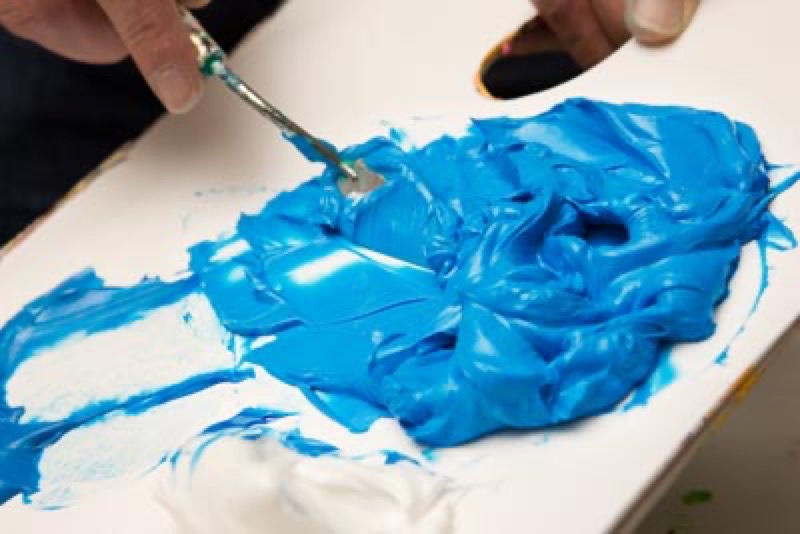The many tools designed specifically for acrylic painting will allow you to make use of its astounding capacity for transformation. Checklist!

1. Media
Acrylics offer an infinite number of formal possibilities… particularly if you use them with media. Go ahead, give them a try!
- Glazing medium: it is milky when fresh out of the tube but becomes transparent when dry. You can apply it with a paintbrush to an already painted surface to create a veil effect or mix it with color to increase its transparency and create glazing.
- Gel acrylic medium: thicker than the previous one, with more transparent colors. You will produce rich, very dense impastos. An indisputable plus: it dries very fast!
- Acrylic paste medium: This is the thickest medium. When diluted with water, it retains its adhesive properties. It is used for very heavy impastos.
- Retarders: They come as both liquids and gels and allow the paint to dry more slowly. Use the gel to create texture effects with undercoats or impastos.
2. Varnishes
Remember to varnish your work once it dries to protect it.
- For small formats, use a glossy acrylic varnish: it is water and scratch resistant. It brings out the intensity of colors magnificently
- For large formats, select a matte acrylic varnish : because a glossy large surface reflects light unevenly.
Trick of the trade: "Made to order" varnish
You can mix the same types of matte and glossy varnishes in any proportion until you obtain just the right level of gloss.

3. Fillers
The remarkable adhesive properties of acrylic paint allow you to change its texture and appearance. Play sorcerer's apprentice by adding all kinds of fillers. ready-to-use acrylic pastes or homemade mixtures: give them a try!
- Crushed marble: in different sizes, from fine powders to coarse sand. These are a heavy fillers: you need to mix them with a lot of binding agent, usually white acrylic paint.
- River sand: an irregular, original texture you can gather from stream beds. Before using it, wash it thoroughly to get rid of any organic residue.
- Sawdust allows you to apply very thick impastos.
Recommended product:
XL® Oil and Acrylic
